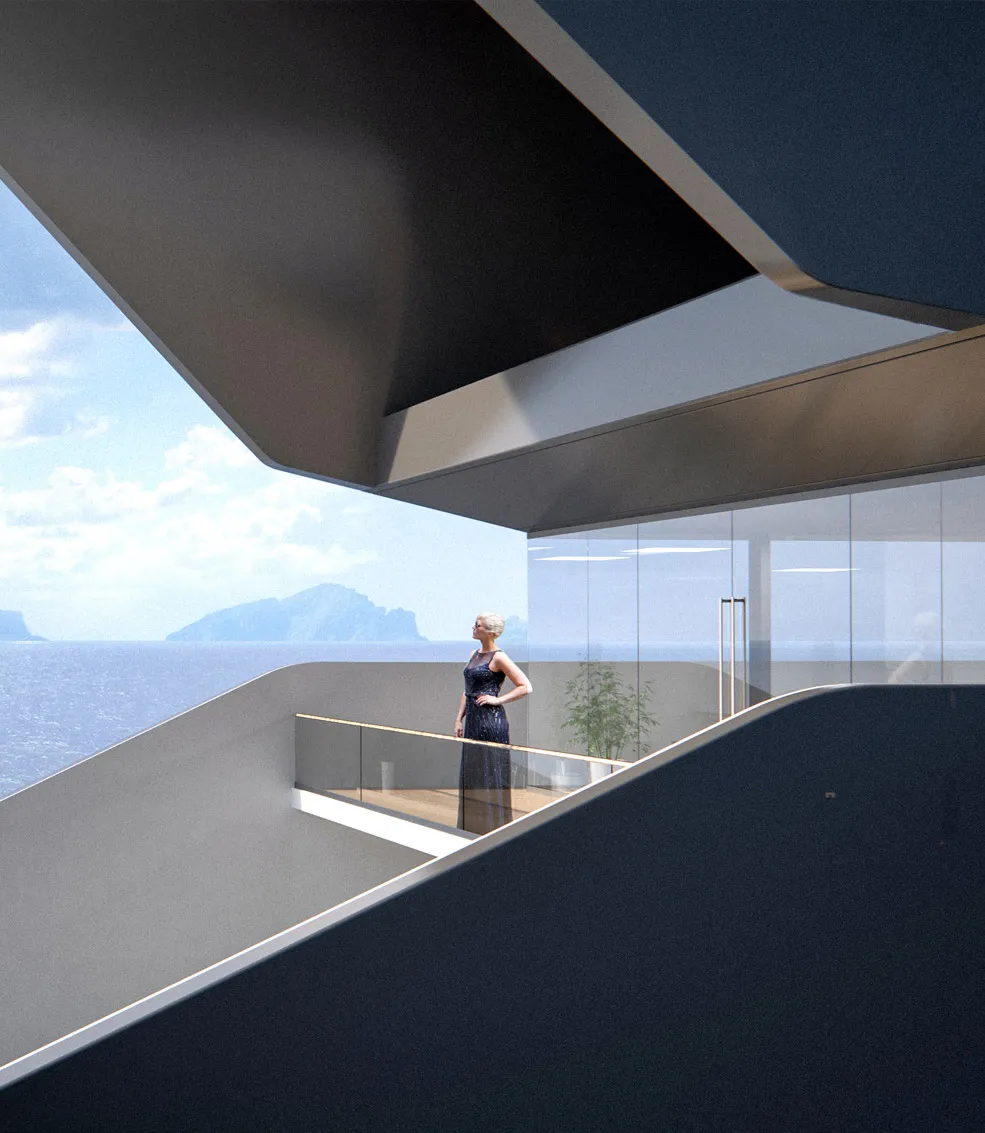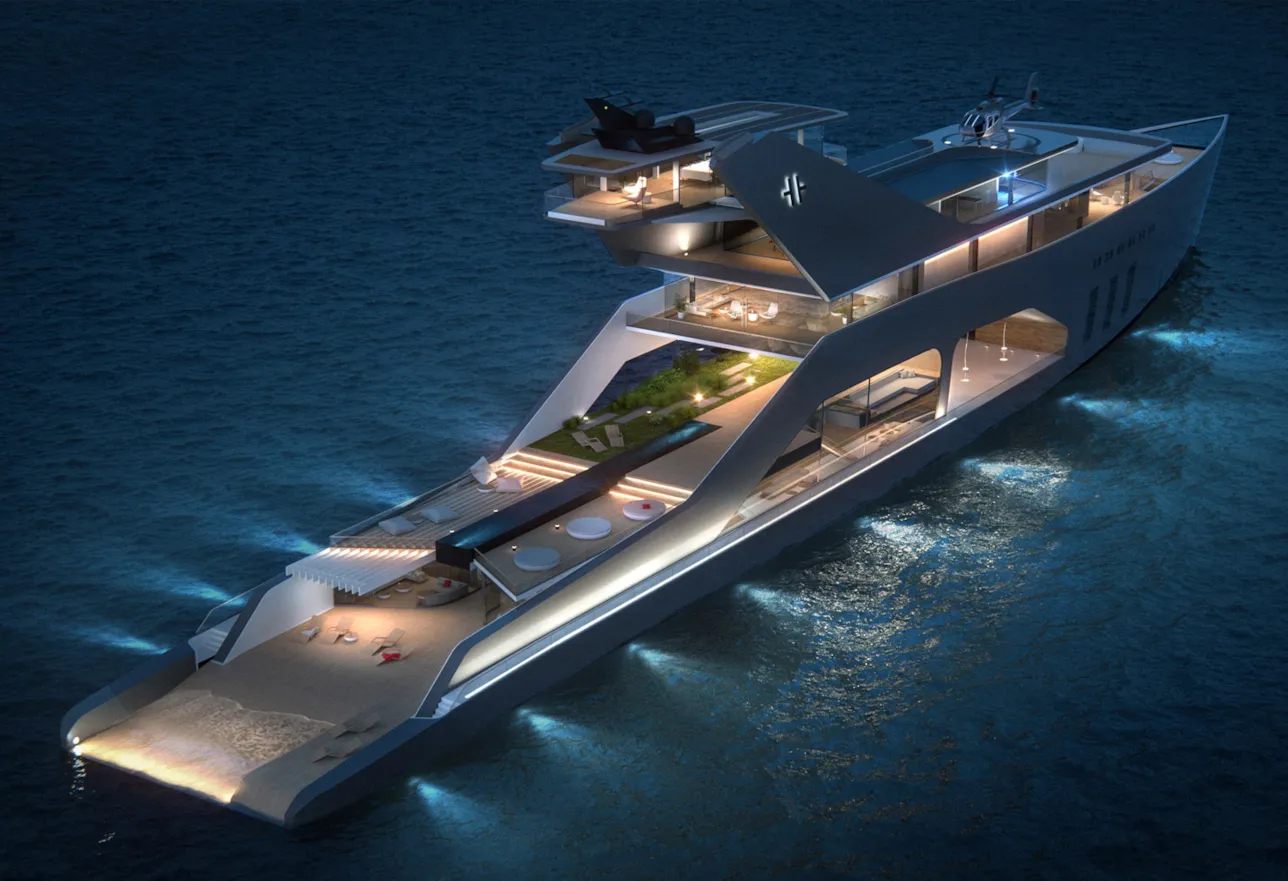Designing the future of cruise
As the cruise market continues to heat up, so does the competition. More companies are competing for more seasoned customers and attempting to entice a younger crowd to cruising.
Design is increasingly acknowledged as a key element in making cruise more attractive for first-timers and experienced customers alike. But who will design the game-changing cruise ships of the future? Many are saying it will not be traditional marine designers, but rather those with experience from outside industries, anything from automobile, to airline, to IT.
Einar Hareide, CEO of Hareide Design, the award-winning industrial design community out of Norway, has had a toe in the water of marine design his whole career, but gained his initial experience in the automobile industry.
Fresh out of a master’s programme in Gothenburg, Hareide attended the prestigious Center for Creative Studies in Detroit, returning to Sweden to do a stint at Saab in the late 1980s. From there he found his way to Stuttgart and Mercedes-Benz. “They had a 300 SL gullwing in the lobby. I used to walk by it in awe every day, feeling unworthy,” he smiles. Perhaps spurred by a debt of honour, he paid fitting homage to the iconic auto by helping to convince Mercedes to reintroduce round headlights in their E-Class series.
Hareide returned to Saab in 1991, taking over as Design Director in 1995, but leaving the company when he began to feel that the new owners were undermining the uniqueness that was the secret of Saab’s appeal. In 2000 he founded Hareide Design in Moss, just south of Oslo.

Returning to maritime roots
Hareide wanted to think more long-term, and more Scandinavian. “I was born into the Norwegian coastal culture and mentality,” he recalls. “We have strong maritime traditions, and I wanted to combine my heritage with my experience from the auto industry.”
Maritime stalwarts like Kongsberg and Rolls-Royce Marine were Hareide Design’s first customers, but the Norwegian industry proved to be more process- than design-oriented. “Norwegian industry is aligned differently than in more diverse industrial countries,” Hareide relates. “Design in Norway often comes in after engineering.”
Hareide came prepared to bring outside impulses and knowledge to maritime design. “You have to start by asking which factors influence design. Environment, regulations, materials – all of these figure in, and there are many parallel processes.” He works purposely with concept designs in order to create expectations and entice hesitant clients to test new waters. “Many clients are reactive, and then it’s often too little, too late. They need to be nudged to think differently from the start.”
That sentiment is shared by Helge Hermundsgård, Business Development Manager at DNV GL, long-time class partners with Hareide Design. “We have learned it is important to establish close cooperation between designers, naval architects and class early on to enable the realization of new designs. Early collaboration helps everyone identify the factors necessary to bring a new design to market.”

Opening up by design
Hareide observes that many maritime designs are similar, with modern cruise ships offering few notable exceptions. “They tend to be functional, but not inspiring,” he observes. “The challenge is to break away from the present, from traditions. Functionality has to come first, but new areas need to be explored.”
He has noticed the same trend in luxury yachts: “They all look alike. Luxury yachts are typically very sleek, but closed off from the outside.” In other words, owners are concerned about appearance, but even more protective of their privacy.
The new generation of superyacht owners have other expectations, Hareide says: “Open is good now. The next generation is less introverted. They are used to sharing their lives through social media, and they want their lifestyles to be seen. And they want their surroundings to be brought into their inside space. If you are cruising in the Bahamas, why close that experience out?”
Hareide’s latest yacht design takes this philosophy to heart, opening up life on board through floor-to-ceiling glass walls and open, multi-use spaces that call to mind parks and viewpoints more than ships’ decks or staterooms. “Owners are seeking new solutions. That means the industry has to be open for design ideas that challenge traditions.”

New ways of working
“If we are going to produce new ideas, we have to work in new ways,” Hareide says, noting that industrial design is the spider on the web: “We have to satisfy all needs and requirements in a 360-degree perspective. Once the discussion is going, that’s when the hard work starts. Our job is to defend what is unique in order to generate enthusiasm.”
The new explorer yacht Caroline, that Hareide is designing for Norwegian Yacht Voyages, is a good example of openness in both the design process and the design itself. “The brand has been through many phases. The design has evolved from fairly traditional to something dramatic the world has never seen.”
The process has been equally groundbreaking: “Secrecy and non-disclosure might work for well-established players, but we strongly believe in creating a transparent brand.” Real-time remote collaboration allows Hareide and colleague Ulf Wynnesdale to put together “the ultimate design team,” and to invite partners and future guests to share their thoughts and comments throughout the process. “By gathering input from all sides, we are able to create a brand that will offer exactly what the market wants.”
The new ways of working may be more effective and allow for more creative input, but Hareide is clear on the need to control quality: “We want open input, but we still have to have control. You can’t allow too many chefs in the kitchen!”

Designing the answer
Though cruise may be growing, it still holds negative associations for some, with an elderly customer base as one of the most common conceptions, although it already offers a wide range of facilities and experiences for different target groups. “There are still enough people who think of cruises as boring and posing an image problem.” Design can change this impression, says Hareide. “The future of cruise will be all about the experience. New generations want to learn and explore, to experience things first hand, and open design will be the key to delivering on these expectations."
Hareide believes this lesson applies across all cruise segments, including the emerging Chinese cruise market. The Chinese middle class is also hungry for new experiences, he notes, and creative design can help satisfy that need.
Design gives a feeling of personal ownership, a kind of modern exclusivity, unique but accessible, and customized to each user. But of course we still have to comply with basic rules, so good collaboration with the class societies is as important as good communication with the end user.”
DNV GL is fully committed to its role in forming the future of cruise: “Designers from outside the traditional maritime world are making the cruise product more attractive for passengers, draw-ing on their inspiration and experience from other industries. Our job is to enable them to help owners and naval architects shape the cruise ships of the future,” says Hermundsgård.
Einar Hareide is convinced that new impulses in cruise design will come from unconventional sources: “Hotel, entertainment, automobile, anything where the appeal hinges on the experience.” Design can itself be part of that experience, he believes, while enhancing the impact of the surrounding environment. “Either way, it will be more and more important for travellers to return home with memorable experiences, to feel that they have learned something on their journey.”
